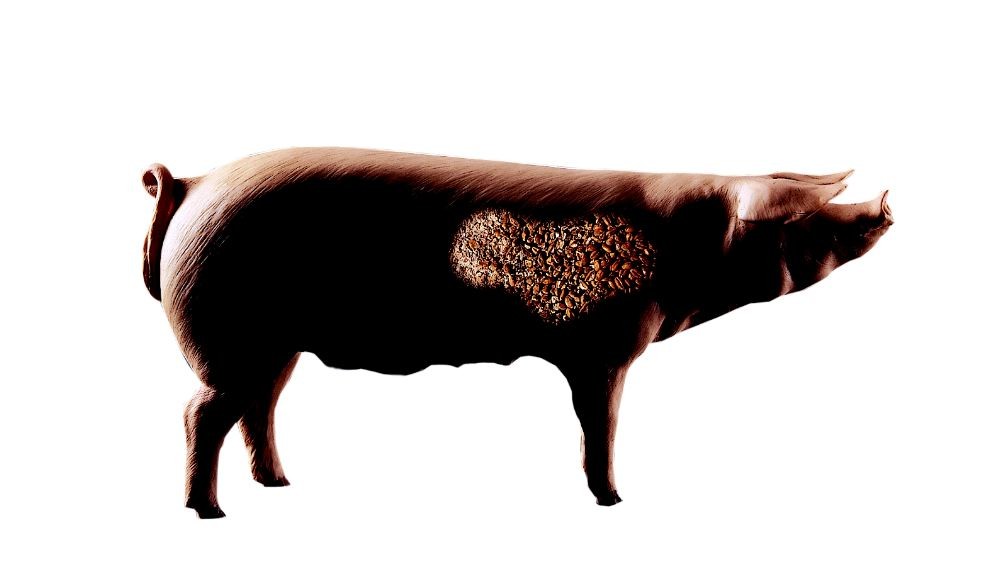Can bile be a biomarker for ochratoxin A?

Biomarkers to confirm a mycotoxin infection in farm animals is important, but can also be difficult. Blood can serve as a biomarker, but researchers also wanted to know if bile could act as a biomarker as well when pigs got infected with ochratoxin A.
Among farmed animals, pigs are particularly sensitive to OTA. Economic losses attributed to the presence of OTA in feeds are not only related to impaired animal health and productivity, but are partly due to the discharge of pig carcasses after slaughter, a preventive measure to avoid human exposure to residues of OTA.
The study, published in the World Mycotoxin Journal, aimed to determine the levels of ochratoxin A (OTA) in pigs experimentally exposed to this mycotoxin and to evaluate if bile may be used to assess exposure to OTA. A group of Italian researchers used 12 hybrid pigs for this. The animals (initial body weight of 30.2±1.6 kg) were randomly divided into 2 experimental groups (D1 and D2), and a control group (D0), each of them consisting of 4 animals (2 males and 2 females).
- A control group D0
- D1 fed with 50 µg OTA/kg diet
- D2 fed with 500 µg OTA/kg diet for 15 days
During the 7 days of acclimatisation and the 15 days following the start of the trial, all pigs were healthy. In particular, no animal of the treated groups showed any symptom attributable to ochratoxicosis, apart from the smallest body weight gain. However, the statistical comparison between D0, D1 and D2 groups shows that both the differences between the mean values of the final weights and the differences between the mean values of the weight gains are not significant (P>0.05).
Italy has maximum levels OTA for pork In Recommendation 2006/576/EC, the Commission of European Communities fixed a guidance value for OTA of 0.05 mg/kg in complementary and complete feeding stuffs for pigs (EC, 2006), but did not set maximum OTA levels in meat-based products. However, in Italy, since 1999 the Ministry of Health has established a guidance value for OTA of 1 µg/kg in pork meat and derived products (Ministero della Sanità, 1999). The Italian guidance value for OTA of 1 µg/kg established for pork meat has been exceeded in all the analysed matrices in this experiment, also in the group fed with OTA contaminated diet 50 µg/kg (the guidance value for OTA in feeding stuffs for pigs recommended by the EU). Therefore, the researchers also indicate that, under certain conditions, EU legislation is not stringent enough for the Italian rules.Other OTA guidance levels for other products (raw materials and food) can be seen in the All About Feed regulation tool. |
OTA level in blood is a more viable approach
The tendency of an about 10 times higher OTA concentration in the animals of D2 group compared with D1 group reflects the mycotoxin concentration in feed 10 times higher, and it is particularly evident in the analyses of plasma, lung, heart and muscle. In the other matrices, the ratio between OTA concentrations in the 2 experimental group is 9:1 in bile, 8:1 in liver, 7:1 in fat, and 5:1 in kidney. Thus, the data show a direct relation between dose and effect, but to a lesser extent in kidney. The percentage of OTA detected in the different matrices versus OTA detected in plasma is quite similar in the 2 experimental groups, except in kidney.
Based on these results, the researchers conclude that analysis of bile can be useful for the detection of OTA in pigs. However, since blood can easily be taken from pigs, and given the correlation between the mycotoxin concentration detected in this matrix and the concentrations detected in the others, OTA level in blood is a more viable approach to assessing the presence of OTA in edible tissues. As lung and heart may contain high concentrations of OTA, the analytical controls should also include these matrices.
Source: Wageningen Academic Publishers











